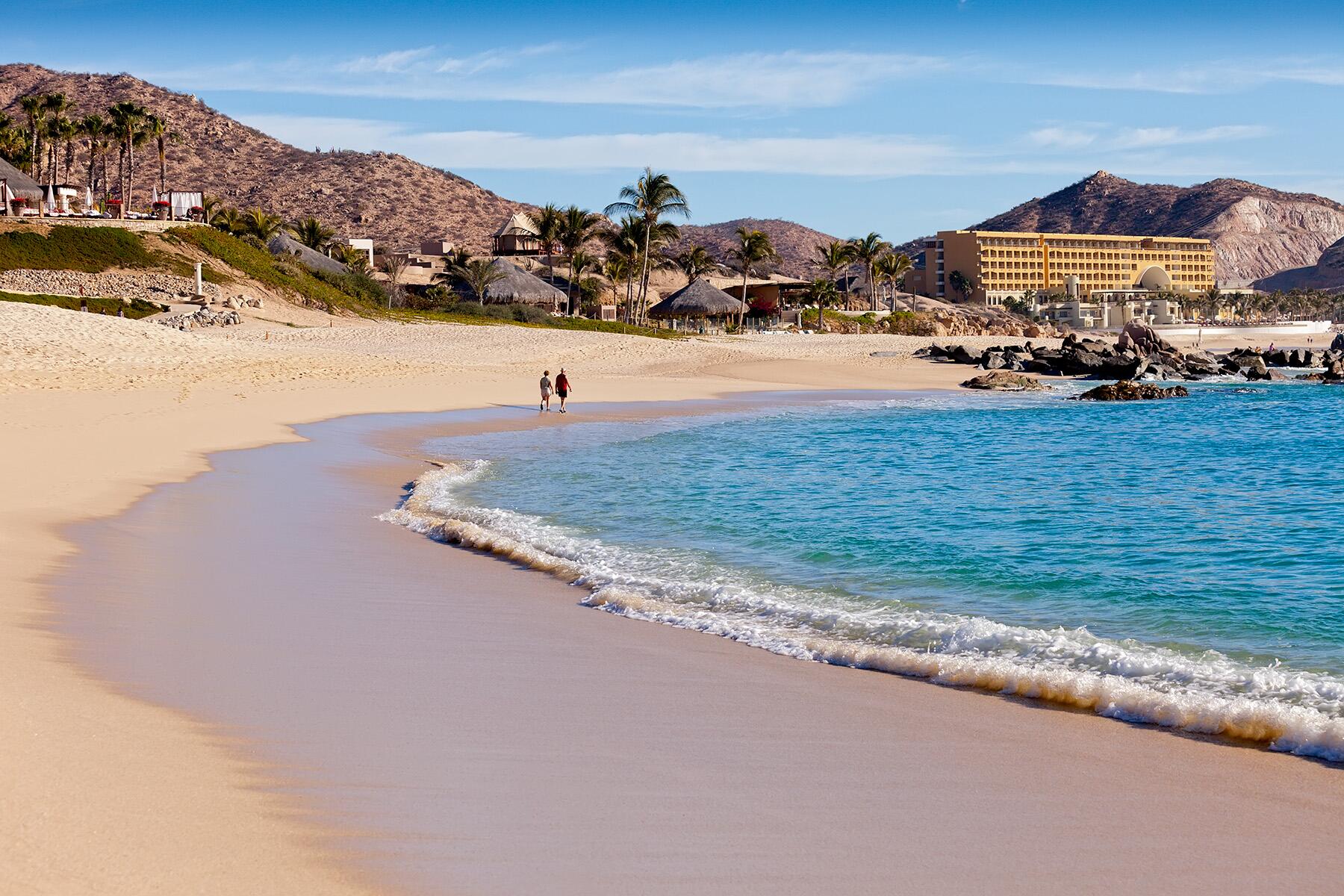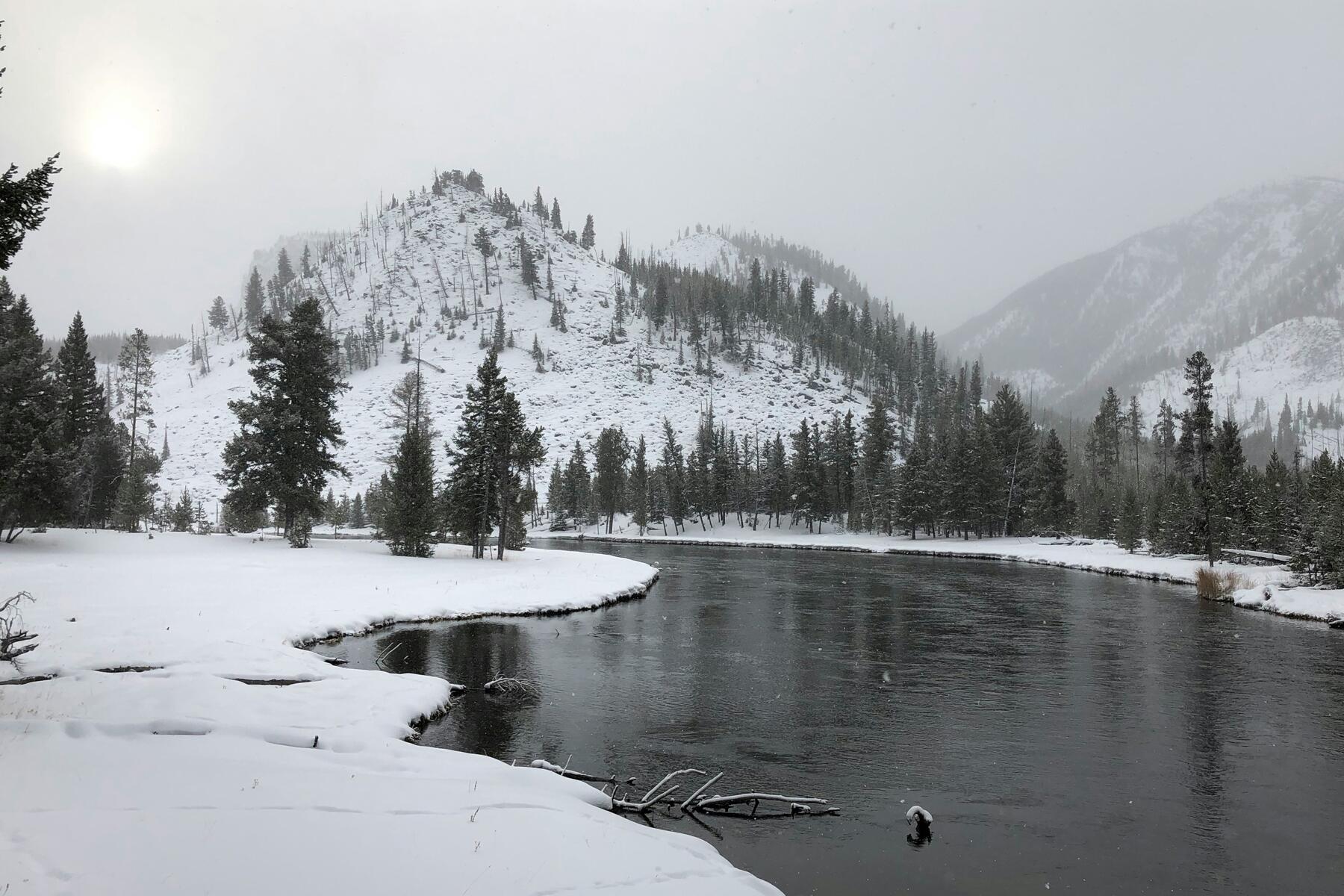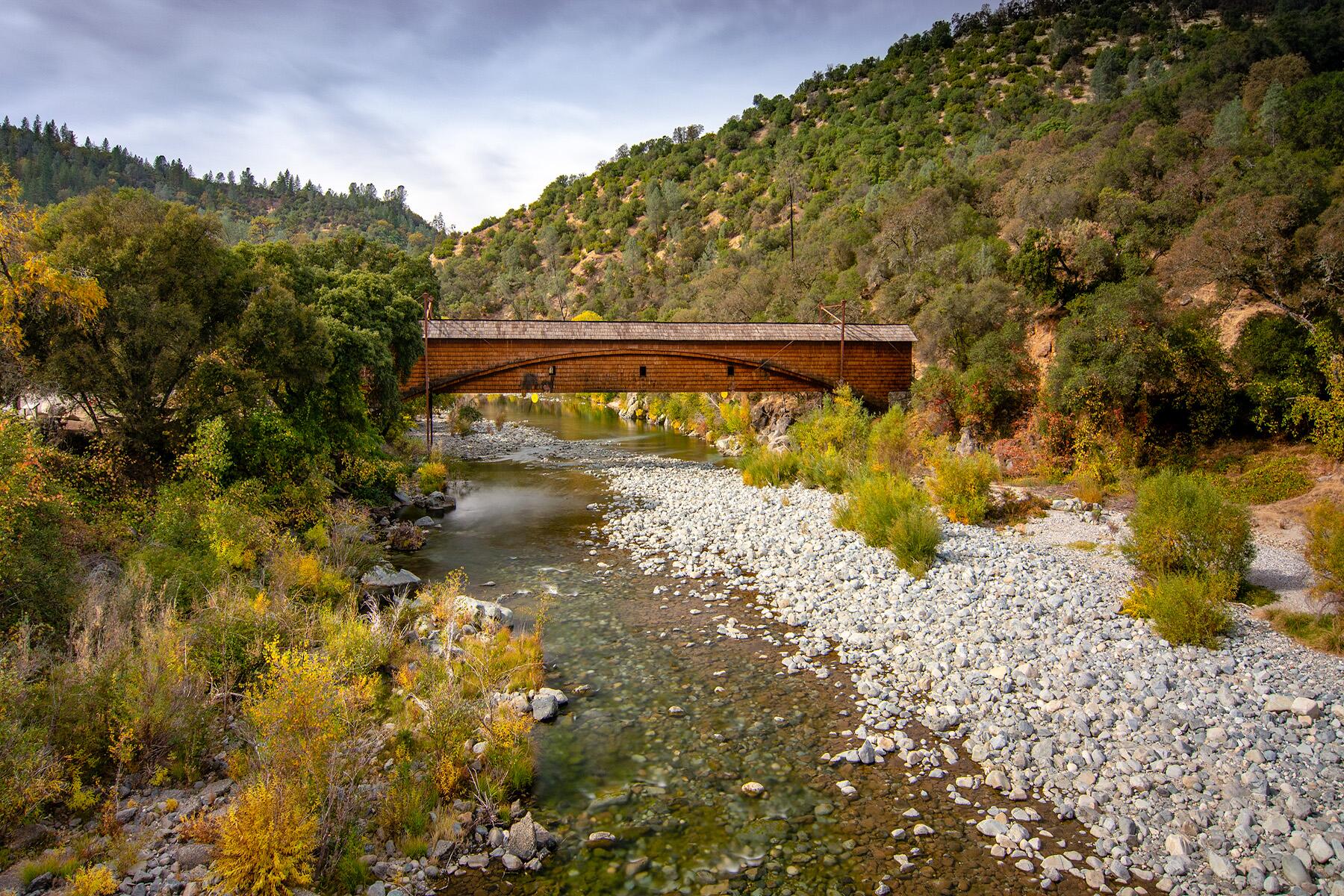Using this guidance from seasoned park rangers, here’s how to embrace your next opportunity to connect with nature and visit wild California.
As the most species-rich U.S. state, California reflects the footprints of human and natural history like no other place in the world. Though its biodiversity faces challenges due to ranching, agriculture, and wildfires, California is a haven for respectful ecotourism that makes visitors think about our collective future.
In California, you don’t need to venture far to enjoy an afternoon of solitude and intimate connection with nature. Most hikes listed below are within a one-hour drive from a city—or at the very least, a cozy winery. If you’re planning a trip to the Golden State, keep in mind explorers are asked to stay on designated trails and keep dogs (where permitted) leashed.
Recommended Fodor’s Video
Below is a guide to scenic hidden gems in California, curated with the help of experienced park rangers and local guides. This list should help you enjoy an unforgettable exploration of the state’s lesser-known wonders.
Julian
You won’t find many stoplights or street lamps in this DarkSky community, but Julian serves up comfort where it matters: good food, classic desserts, and nature walks through springtime wildflowers and conifer forests.

Nestled in Southern California’s Cuyamaca mountains, Julian is about an hour east of San Diego. Famous for its apple orchards, a visit to Julian offers a chance to enjoy local spirits like Julian Hard Cider’s Black and Blue—a local favorite blended with blackberry and blueberry juice—and satisfying, post-hike apple pies.
As described by Eric Jones, executive director of the environmental conservation nonprofit Volcan Mountain Foundation, San Diego County, where Julian is located, is a biodiversity hotspot. The region is brimming with ecological diversity across a spectrum of six vegetation zones. The drive from San Diego to Julian along I-8 showcases this gradient, taking you from beaches and sea cliffs through a network of asphalt that opens up to grasslands, chaparral shrublands and hardwood and coniferous forests at higher elevations.
INSIDER TIPAt up to 6,500 feet, San Diego County’s mountain region experiences wet and occasionally snowy winters. Fires are still a concern in Julian, due to the warm Santa Ana winds sweeping in from inland deserts. Be sure to stay alert for safety advisories.
Hike
Kanaka Loop Trail at the Santa Ysabel East Preserve. This family-friendly “lollipop-style” hike offers a few choices based on intensity and what you want to see. There’s a 3-mile out-and-back portion (the “stick” of the lollipop), or you can opt for an extra loop trail (the “candy”) that climbs along a mesa where Jones says wildflowers put on a colorful show in the spring. This trail’s name nods to California’s immigration and labor history, as the word “Kanaka” refers to native Hawaiian islanders who worked in California as early as the mid-1800s.
Look For
Coyotes, wildflowers, oak trees, and coulter pine trees (nicknamed “widow-makers” for their oversized pine cones weighing up to 11 pounds!).
Eat
Start your morning at The Purple Owl Cafe for a delightful selection of crepes, coffee and baked goods. For an afternoon treat in Julian, visit Apple Alley Bakery For dinner, enjoy farm-to-table dining at Jeremy’s on the Hill, but be prompt—most places in Julian shut down by 7 p.m.
Stay
Warm yourself by the fire at the Oak Perch Cottage. Enjoy a rustic wood-paneled aesthetic, comfy furniture, a full kitchen and a porch to admire the moon.
Related Activities
Explore the California Wolf Center, a vital sanctuary dedicated to the restoration of the Mexican Gray Wolf population. Through an innovative cross-fostering wolf pup program, the center has helped the endangered wolf population grow by 23% since 1997 when there were just 13 wolves left. Visitors must book tours on the official website.
Temecula
Located conveniently within an hour and a half of every major SoCal urban center, Temecula offers a serene escape into nature. The valley spans a stunning 32-square-mile area, characterized by rolling vineyards, golden hills, and an expansive sky. Elevations vary from 1,175 to 2,600 feet, and the surrounding snow-capped peaks of Mount San Jacinto, Palomar Mountain, Mount San Bernardino, and Mount San Gorgonio create a gorgeous panorama.

Hike
Adobe Loop Trail at the Santa Rosa Plateau Ecological Preserve. The Santa Rosa Plateau Ecological Preserve, managed by Riverside County Parks, is a unique sanctuary at the southern end of the Santa Ana Mountains. The plateau is something of a marvel, just 20 miles from the Pacific Ocean and close to Interstate 15, yet home to a rare ecological community.
According to park ranger and interpreter Rob Hicks, the Nature Conservancy purchased the plateau in 1984 to preserve the mesa’s vernal pools, which host tiny crustaceans known as fairy shrimp. These creatures exist in no other place in the world and are highly adapted to the Plateau’s temporary pools. They live in a dormant state as embryos, waiting for the right weather conditions to develop and breed. With a life cycle intricately tied to the wetland’s existence, these crustaceans have evolved to survive only here.
INSIDER TIPThe Santa Rosa Plateau features two recreational sections: the strictly regulated ecological reserve for trail hiking only, and a more lenient, county-owned multi-use area allowing biking, horseback riding, and dog-walking on leashes. Be sure to go to the right one.
Look For
You’ll see four unique biomes on display at the Santa Rosa Plateau: grassland, woodland, chaparral, and wetlands. The reserve is also a haven for wildlife, including coyotes and various bird species. Be sure to visit the Machado Adobe, one of Riverside County’s two oldest buildings dating back to when the area was part of Mexico.
Eat
Don’t leave the valley without a visit to EAT Marketplace in Old Town Temecula. Chef di Bernardo is deeply passionate about using local, high-quality ingredients in her dishes, which appeal to eaters of every palate and dietary philosophy. What’s even better are the company’s values ensuring fair and a living wage for all involved in its food production process, from growers and pickers to kitchen staff.
A favorite among patrons is the steak sandwich, served on freshly baked ciabatta bread with caramelized onions and gooey Fontina cheese. The popular “Brooklyn Girl” sandwich, a tribute to Chef di Bernardo’s mother, is a classic New York deli-style sandwich. For dessert, try the gluten-free specialty donuts, which Chef di Bernardo also serves at EAT’s Pasadena-based sister company, Hello You’re Welcome. With mouthwatering flavor combinations and healthy ingredients, these treats satisfy your sweet tooth and your body and soul.
Drink
Enjoy a wine tasting at Wilson Creek Winery, a leader in regenerative farming practices. Benefit from the viticultural team’s deep understanding of grape quality and flavor, while simultaneously feeling content that their winegrowers’ focus on soil health improves the region’s ecological balance.
“Because of what we have done with the soil, we now use 60% less water and get 120% our prior yields at a higher quality without having to use any synthetics,” explained vineyard manager Greg Pennyroyal. In an era marked by climate change, lessened water consumption is great news.
Plus, the wine is delicious: A crowd favorite at Wilson Creek Winery is the Almond Sparkling, a unique white blend infused with natural almond essence. The result is a surprising, sippable spirit that balances sweetness with the nutty aroma of marzipan.
Stay
Book a room with a vineyard view at The Vine House Bed & Breakfast, an upscale family-owned bed and breakfast just minutes from several award-winning wineries. Warm up in a king-size bed and in-room fireplace, then wake up to farm-fresh eggs for breakfast. Flaunting mature persimmon trees, the five-acre grounds provide a picturesque backdrop for your vacation—and the staff are super friendly.
Related Activities
Every other Saturday (with some exceptions), the Temecula Olive Oil Company invites visitors out to its ranch in Aguanga, California, to experience firsthand the production and tasting of its uniquely crafted olive oils. A state-of-the-art mobile mill allows for on-site olive processing anywhere on the property, ensuring the freshest possible branch-to-bottle taste. And with delightful flavor combinations like lemon, fresh jalapeńo, and smoked hickory—resulting from innovative cold milling techniques—these artisanal olive oils will take you on an aromatic journey.
A Grape Escape Balloon Adventure offers scenic sunrise hot air balloon flights with experienced pilots.
Idyllwild
Tucked away in the San Jacinto mountains, Idyllwild is a peaceful mountain retreat characterized by towering pines and rugged granite crags that have captivated rock climbers’ imaginations for decades. Positioned at mile 180 along the 2,650-mile Pacific Crest Trail (PCT), Idyllwild offers a variety of hiking options, from leisurely day treks to more ambitious overnight adventures in the high country. The town itself is charming, with several locally owned shops and eateries catered to outdoor enthusiasts, families, and anyone who appreciates mountain living.

Hike
The Devil’s Slide Trail is a well-maintained hike featuring sweeping views and interesting rock formations. Starting from Humber Park in Idyllwild, the route climbs roughly 2.5 miles up to Saddle Junction before meandering and intersecting with the PCT. The trailhead serves as one of the main access points into the San Jacinto Wilderness, making it a highly popular spot. Go early before crowds accumulate. You’ll enjoy a morning of silence broken only by the tap of woodpeckers in towering pines and friendly hikers exchanging “hellos.”
INSIDER TIPDevil’s Slide Trail is in the San Jacinto Federal Wilderness, which is inside the San Bernardino National Forest. It requires either an annual Adventure Pass ($30) or a single-day pass ($5). Purchase your pass online or from a participating local vendor. A printed copy must be displayed on your vehicle dashboard while you hike and/or camp. Check with the Idyllwild Ranger Station for more information.
Stay
Plenty of tent camping sites exist nearby in the San Bernardino National Forest. Reserve them through Recreation.gov. For a cozier option, book a suite at The Grand Idyllwild Lodge, a luxurious mountain retreat featuring early 1900s California Craftsman-style architecture and modern comforts. Sleep on 600-thread-count sheets and spread out in a lodge-style living room with a massive fireplace. Enjoy the on-site spa, fitness room, sauna, and 9-hole mini-golf green for the family.
South Yuba River State Park
Dive into the famous Yuba River, where European miners found gold in the 1840s. The water level is too high for swimming in the spring, but summer and fall bring more tranquil waters, says South Yuba River State Park head ranger Mary Moyer. The mid-year months are ideal for swimming and gold panning using the “hands and pans” method, she says.

Accessible by car, South Yuba River State Park features five main river crossings, including the easiest access point, Bridgeport Covered Bridge. Here, you’ll find the museum and visitor’s center, along with an ADA-accessible riverside trail and picnic area. Parking at the Bridgeport Covered Bridge requires a fee, due to its popularity.
And for history buffs, Highway 49 Crossing boasts a historic bridge with limited but free parking, although ADA access is minimal, and reaching the river can be a challenge. Purdon Crossing offers easier river access via a fire road that narrows to a single-track trail, but be aware that some areas permit nudity. Lastly, Jones Bar provides a more secluded experience with hiking-only access via the Independence Trail, involving a scenic 15-minute downhill hike and a strenuous return uphill, making it a less frequented but beautiful option.
INSIDER TIPBefore you visit, Moyer recommends checking real-time weather conditions, as both the trails and river are easily affected by fire and snow. For up-to-date information, check the park’s social media channels and website, where the staff frequently post updates and safety advisories.
Stay
Nearby, the Malakoff Diggins campground offers tent sites and cabins for up to five people. Reserve your spot up to six months in advance via the Reserve California site.
Pinnacles National Park
Prepare to look up a lot during your visit to Pinnacles National Park, where endangered California condors—the largest bird in North America—fly overhead, and dark night skies make the stars dazzle.

Forged from the fiery eruptions of ancient volcanoes some 23 million years ago, Pinnacles’ landscape was sculpted by volcanic activity and transformed over eons into a majestic realm of rock spires and deep canyons. The park is open all year round, but the busy season runs from December to June, since temperatures surge past 100 degrees in the high summer.
Pinnacles’ busy season also corresponds with raptor nesting season. Pinnacles west lead ranger Christopher Symons says the busy season is prime time for viewing peregrine falcons, prairie falcons, and California condors. (If you haven’t watched them on YouTube, Peregrine falcons are the fastest creatures on the planet, with the ability to dive-bomb at 240 miles per hour.)
Hike
The Moses Spring to Rim Trail Loop. Accessible via the East Entrance (see map), the Moses Spring and Bear Gulch areas feature Pinnacles’ most popular and iconic trails, showcasing narrow caves and a striking man-made reservoir ideal for spotting red-legged frogs—an important threatened species in California. Hike the family-friendly, 2.2-mile Moses Spring trail to view talus caves that formed during the last ice age. If possible, go on a weekday to avoid crowds.
Balconies Cliffs Trail. Accessible via the West Entrance (see map), the Balconies area is recognized for its raptor density, making it an excellent spot for birdwatching. It features steep elevation changes and breathtaking cliff views, along with an adventurous passage through underground caves. You won’t see frogs in this section of the park, but you’ll get a sweeping and immersive experience of what Pinnacles has to offer—without so many crowds.
INSIDER TIPBring a flashlight to explore Pinnacles’ caves.
Stay
The Pinnacles Campground, located on the eastern side of the park, is open year-round. Book reservations in advance through Recreation.gov.
Related Activities
The town of Soledad, near the western entrance of Pinnacles National Park, is known as the setting of John Steinbeck’s Of Mice and Men. Drive through Soledad, then visit the National Steinbeck Center in Salinas.
Asilomar State Beach
Asilomar State Beach, a rocky one-mile stretch in Pacific Grove, offers a prime tide-pooling spot along Central California’s coastline. Observe the rich ecosystem, home to kelp, mussels, abalone, seals, otters, birds, and the mysteriously colorful nudibranchs (often called sea slugs). Remember that Marine Protected Areas like Asilomar are “no take” zones, meaning visitors must refrain from collecting rocks, shells, sand, or any other sea life. In fact, it’s best to avoid touching altogether. ”A lot of the critters are dying off because they’re getting overstressed by the hands-on movement from people,” explains Nova Hairston, West Marin supervising park ranger for Marin County Park. When it comes to tidepools, you can look but don’t move or fondle the creatures. You should also dress in layers and wear sturdy shoes (avoid flip-flops).

Hike
Accessible from Sunset Trail via a ¾-mile hike down the Asilomar Coast Trail, a 1-mile coastal pathway winds through the tidepool’s miniature, ever-changing mosaic of colors and textures.
INSIDER TIPGoogle the weather before heading to the tidepool. Look for “sneaker wave” advisories, says Hairston. A “sneaker wave” is a large and powerful wave that appears without warning, catching beachgoers off guard.
Look For
The tidal zone is a bustling hub of activity, where every rock and crevice teems with life. Look for crabs, starfish, abalone, kelp, clams, nudibranchs, and sea urchins. Avoid walking on kelp-covered rocks—the seaweed is likely still alive and shouldn’t be trampled on. Otherwise, says Hairston, walking on tidal rocks is OK.
Eat
Dine at Passionfish in Pacific Grove for a sustainable meal, serving fresh local fish and a wine list of unique vintages from eco-conscious wineries, all at reasonable prices. Cap the night with a varied beer flight at Dust Bowl Brewing Company next to the cozy fire pit.




